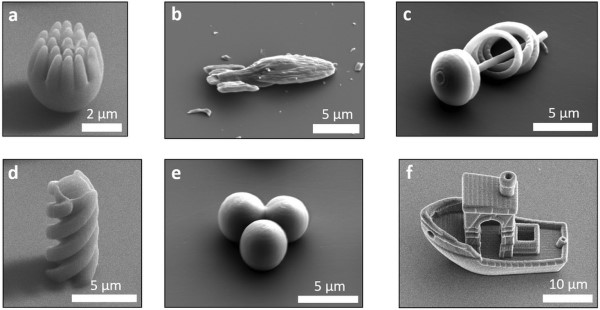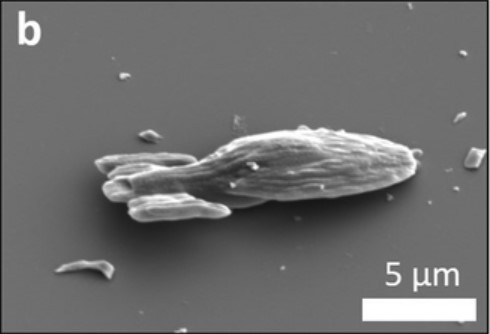ARTICLE – Several months ago I noticed an article (PC Gamer) about scientists from Leiden University (Soft Matter) having printed a 15 micrometer-sized starship Voyager using a 3D microprinter (Photonic Professional GT, Nanoscribe GmbH). They did this to study how synthetic microswimmers move through a viscous substance. Synthetic microswimmers propel themselves through a substance by “[generating] chemical, electric, or thermal gradients in their vicinity through chemical reactions on their surfaces” (Physics Today, p. 46) rather than using cilia or flagella like natural microswimmers i.e. paramecia and sperm.
 So, this 15 micrometer-sized Voyager is self-propelled and is helping scientists study the behavior of various-shaped synthetic microswimmers through a viscous substance. Why is this important? “All major cardiovascular diseases and diabetes have been linked to an increase in the viscosity of blood. As blood thickens, so does one’s risk to one of these diseases” (Leiden University). Thus studying the movements of different-shaped micrometer-sized synthetic objects can help scientists study delivery mechanisms for drug applications, etc. Previously, scientists were limited to spherical synthetic objects.
So, this 15 micrometer-sized Voyager is self-propelled and is helping scientists study the behavior of various-shaped synthetic microswimmers through a viscous substance. Why is this important? “All major cardiovascular diseases and diabetes have been linked to an increase in the viscosity of blood. As blood thickens, so does one’s risk to one of these diseases” (Leiden University). Thus studying the movements of different-shaped micrometer-sized synthetic objects can help scientists study delivery mechanisms for drug applications, etc. Previously, scientists were limited to spherical synthetic objects.
So, scientists are not only finding out important information, but they are also having some fun doing it! This Voyager is truly going “Where no one has gone before”. It’s practically the Fantastic Voyage brought to life – minus the micrometer-sized human beings. Man, I loved that movie as a kid…




Gadgeteer Comment Policy - Please read before commenting
Cool that they used the boat model, which is commonly used to test normal-sized 3D printers.
John – I thought the boat was pretty cool too. I liked the detail they were able to attain – impressive!